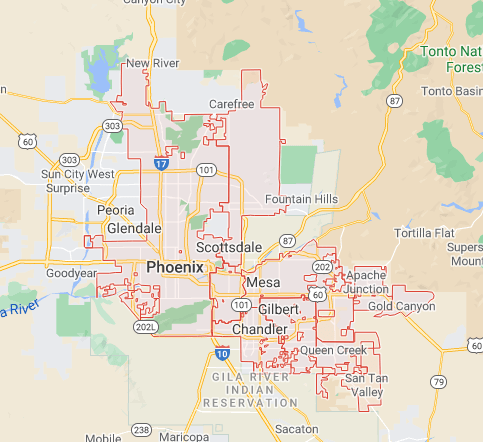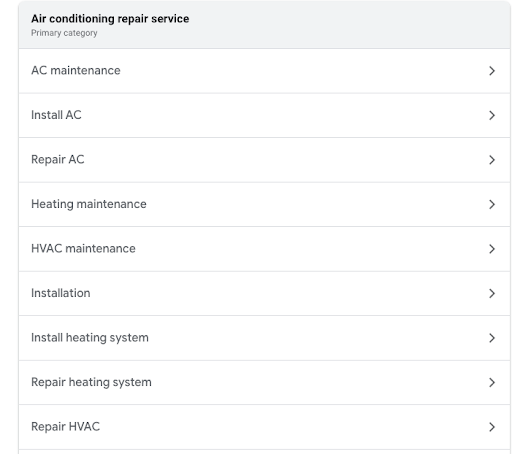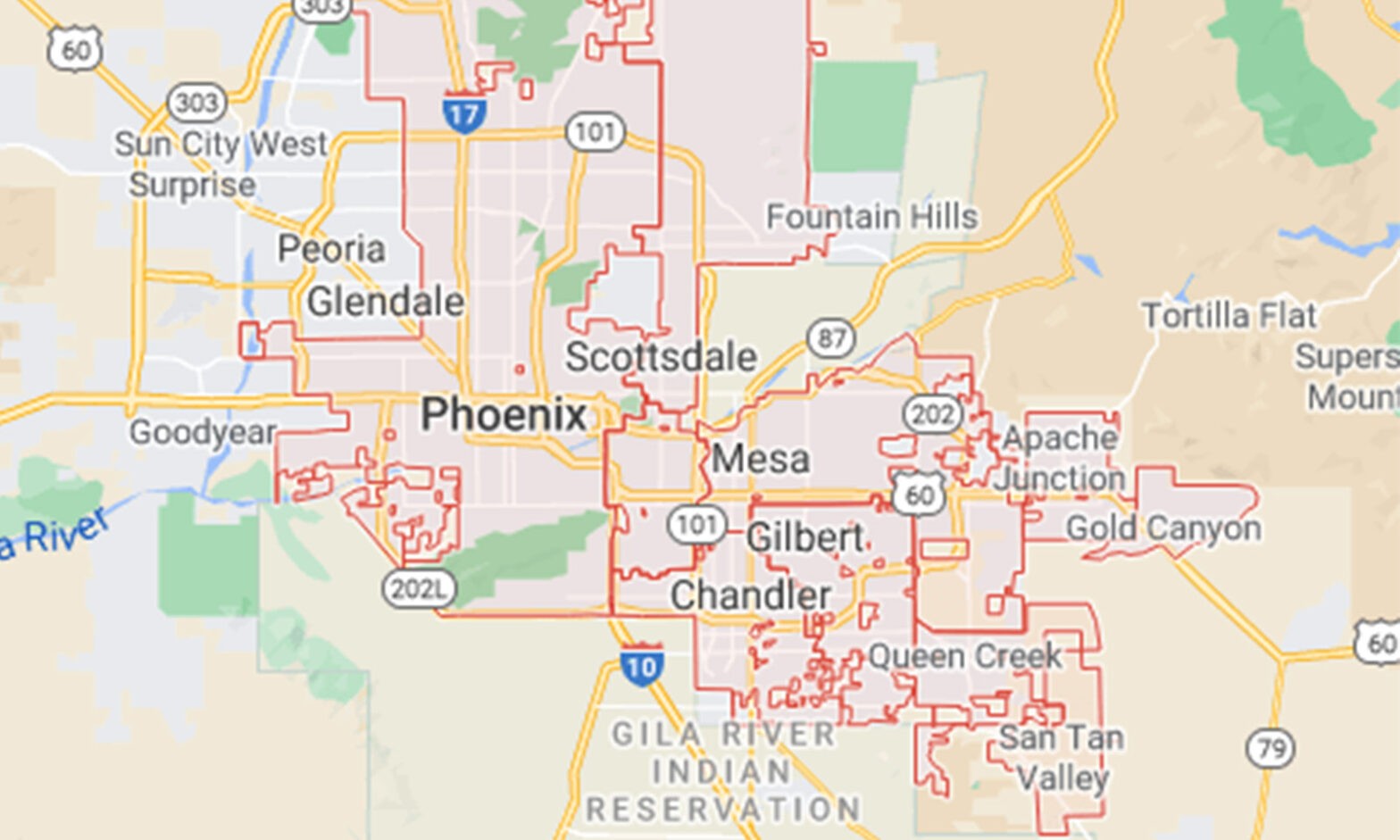Here at V Digital Services, Local SEO is our bread and butter. It is the very foundation of what our entire agency is built on, and we’re absolutely obsessed with it.
Over the years, the way people search for local products and services has changed dramatically, and Google’s locally-driven algorithms have changed right along with them.
One of the niches within the Local SEO space that has been impacted by these changes are Service Area Businesses or “SABs,” as we like to call them.
Here you’ll find a Local SEO guide on improving rankings and increasing visibility specifically for service-area businesses.
If you’d like to jump right to the nitty-gritty, use the links below:
- What is a Service-Area Business?
- Service-Area Business Examples
- How to Optimize GBP for a Service-Area Business
- How to Optimize a Service-Area Business Website
What is a Service-Area Business?
At its core, Local SEO encompasses any keywords or queries that have locally-driven or geographically-specific intent.
While it’s true that all local businesses share a common audience based on their geography, they can have drastically different needs when it comes to being successful in Local SEO. Hence, as business owners and/or SEO’s, it is incredibly important to consider the type before diving into your SEO campaign.
It is common for local businesses to be referred to as “brick-and-mortar” businesses, which help create some division between them and e-commerce businesses that tend to do business solely online. The truth is, though, it’s a lot more complicated than that.
We find that the term brick-and-mortar is better used for businesses where their customers go to them. These businesses have a specific physical address associated with them that is always customer-facing on their Google Business Profile pages, website, and directories across the web.
“Service-area businesses,” however, typically provide services at their customer’s location. It is also common for them to serve a wide area that expands far outside their immediate address or location. Sometimes these businesses don’t even have a physical location for their customers to visit. And lastly, service area businesses usually need to hide their address on directory listings across the web.
What Are Some Examples of Service-Area Businesses?
- HVAC Contractors
- Plumbers
- Landscapers
- Carpet Cleaning Companies
- Locksmiths
- Roofing Contractors
- Painters
- Fence Installers
- Garage Door Installers
- Pest Control Companies
There are a myriad of other business categories that fall under this realm of service-area businesses, but hopefully, that shortlist helps you understand.
How to Optimize a Google Business Profile Listing for a Service-Area Business
1. Create and/or Claim Your GBP Listing
If your business does not exist within Google’s database, you’ll need to create a new listing. If the listing exists but hasn’t been claimed, you’ll definitely want to claim it. Pay close attention to the questions as you go through the process because some are specifically tailored to SABs.
2. Define Your Service Area
Within the GBP platform, you’re allowed to set your service area based on the cities, postal codes, or other areas that you service. As of this writing, you can have up to 20 different service areas, and Google specifically recommends not extending past two hours of driving time.

3. Add the Proper Categories
As is often the case in SEO, there are a lot of varying opinions out there when it comes to selecting categories for your Google Business Profile listing.
One thing that most of us agree on, though, is that if the category feels like a stretch, it probably is, and you should stay away from using it.
However, if the category is, in fact, pertinent to your business, then, by all means, add it to your listing. At V Digital Services, we believe that you should select any categories that are relevant to your business. If you don’t, visibility for those services will be extremely limited.
There are differing opinions that feel as though you should only focus on a small handful of categories (depending on how many services you offer) and maximize visibility solely for those categories because going beyond three to five categories can dilute your prominence.
Make sure to do your research and test accordingly. Here is what the categories functionality looks like inside the Google Business Profile platform:
4. Add All of Your Service Offerings
Functionality with the Google Business Profile platform changes all the time, so depending on when you’re reading this, the advice may differ. As of right now, services are typically auto-generated based on your category selections.
As is the case with categories, make sure you’re only selecting the services you ACTUALLY provide. Doing so will further help to optimize your listing and expand your local relevance.

5. Ask Your Customers for Reviews
One of the biggest differentiators between brick and mortar businesses and service-area businesses is the fact that proximity to the searcher is not nearly as important for SABs since customers do not have to travel to them.
Instead, it is more important for SABs to focus on the prominence and relevance aspects of Local SEO. One of the best ways to tackle this is simply by asking your customers to leave reviews across a multitude of platforms, but more specifically, Google.
Google is far more inclined to give visibility to SABs with great reviews and a solid reputation across the web.
We highly recommend that all SABs invest in some sort of reputation management services to ensure your business has a squeaky-clean reputation online.
How to Optimize a Service-Area Business Website
While optimizing your Google Business Profile listing is incredibly important for Local SEO success for service-area businesses, data shows that an optimized website is equally as important as we transition from 2020 into 2021.
5 Must-Have Page Types for Service-Area Businesses to Ensure SEO Dominance
At V Digital Services, we feel that having an optimized website architecture is imperative for any type of business. Not only is it important for customers to be able to navigate through your website easily, but it is also important for website crawlers to be able to easily navigate through it, as well.
If you are a service area business, there are five essential page types you must include:
1. Homepage
We understand that the homepage is a given, but the keyword targeting of the homepage is tremendously important.
Make sure that your keyword targeting aligns with your primary category in some way, shape, or form. It doesn’t have to be an exact match, but it should be close. Also, be sure to include a geo-specific keyword target for the city your business actually resides in.
For example, if your business resides in Aurora, CO, you may be inclined to try to target Denver-specific keywords, but you would have an uphill battle ahead of you.
While proximity isn’t everything for service-area businesses, Google still understands city boundaries and prefers businesses that actually exist there.
Open a new tab and do a quick search for “air conditioning repair denver” vs. “air conditioning repair aurora,” and you’ll see what we’re talking about. The radius for Denver vs. Aurora is very clearly defined, which makes it more difficult to rank outside of the city in which your business resides.

You’ll learn more about targeting multiple geos in Step 3.
2. Service Pages
You should have a dedicated page for each and every service your business offers. Doing so allows you to target the corresponding keywords for each service offering at a local level.
We’re big fans of using flat architecture, so these pages should ideally be built off the root.
If your root domain doesn’t already include the city you’re targeting, we recommend adding it to the URL slug for the page as it seems to give a significant boost in rankings.
Be sure to link to these pages from the body of your homepage to pass maximum authority and work them into your primary navigation and footer whenever possible.
Make sure to target the same city here as you did on your homepage.
3. Service Area Pages
These pages help to expand your geographic reach into additional cities, suburbs, neighborhoods, etc.
The important thing to remember here is not to go crazy. Creating too many service area pages can lead to website bloat, which can hurt your site overall. Pick a handful of closely neighboring cities and start there.
Think of these pages as a geo-specific version of your homepage. If you offer a small list of services, provide a brief overview of each service and then drive an internal link to the corresponding service page to provide the customer with more information.
We find that running paid campaigns to these service area pages can really help fill the gap when you’re not getting visibility organically in these cities due to proximity.
4. Blog
Blogs definitely aren’t what they used to be when it comes to garnering success in the Local SEO space, but they’re still a necessary evil.
Focus on creating assets that are valuable to your customer base, whether that be How-Tos or FAQ-style content.
It is also a great idea to create localized content specifically about your city. Sure, these posts may not garner much in the way of organic traffic, but they are imperative for improving local relevance.
5. Customer Reviews Page
Much like blogs, adding customer reviews to local business websites has also been a bit overdone, but we still feel as though they are essential, and moderation is key.
DO NOT FAKE THE REVIEWS. Be honest with your customers.
As we mentioned earlier, a solid reputation is crucial to your success. Ask your customers for written reviews, or better yet, ask them to go on video. Videos don’t have to be fancy, but prospective customers often find videos to feel more legitimate. Uploading these testimonials to your YouTube page is also a great way to push local relevance and trust.
Having reviews and testimonials on your website offers social proof that you’re actually good at what you do and assists in the conversion process.
Conclusion
As you’ve probably come to find, there are many peculiarities when it comes to service-area businesses and being successful in Local SEO.
V Digital Services is always here to help ensure your success. If you ever find that managing your Local SEO campaign is too overwhelming, we have an abundance of experts at your service and ready to assist.
We hope this guide will help lead your service-area businesses to Local SEO success.
As always, leave a comment below if you have any questions.
Featured Image: Monster Ztudio / Shutterstock



 GBP, Google Business Profile, Local SEO, Service Area Businesses
GBP, Google Business Profile, Local SEO, Service Area Businesses PREVIOUS
PREVIOUS
Nice blog on SEO Guide
Nice blog on SEO Guide
Briefing of every post is very impressive. I really like it. Thanks
I like this article. It is beneficial for others also. Thank you for posting this relevant information.